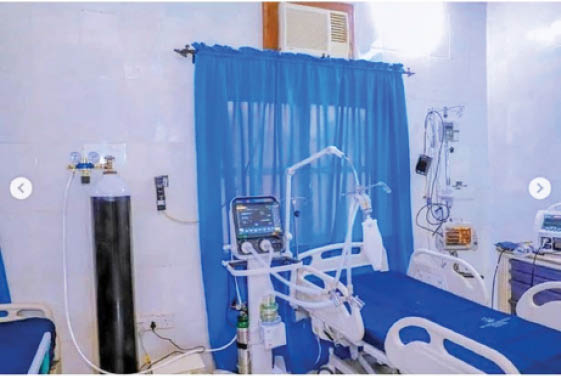Could biosensors detect coronavirus in the air?
Pollution researchers previously working on measuring, analysing and reducing airborne pollutants like aerosols and nanoparticles are now turning attention to developing sensors that can quickly and reliably detect coronavirus in the air. Jing Wang and his team at Swiss Federal Laboratories for Materials Science and Technology are leading the effort. Even before the coronavirus pandemic […]

Isolation centre at Kebbi Medical Centre, Kalgo
Pollution researchers previously working on measuring, analysing and reducing airborne pollutants like aerosols and nanoparticles are now turning attention to developing sensors that can quickly and reliably detect coronavirus in the air.
Jing Wang and his team at Swiss Federal Laboratories for Materials Science and Technology are leading the effort.
Even before the coronavirus pandemic started, they had been researching sensors that could detect bacteria and viruses.
As early as January, the idea of using this basis to further develop the sensor in such a way that it could reliably identify a specific virus was born.
The sensor will not necessarily replace the established laboratory tests, but could be used as an alternative method for clinical diagnosis, and more prominently to measure the virus concentration in the air in real-time: For example, in busy places like train stations or hospitals.
The sensor is based on tiny structures of gold, so-called gold nanoislands, on a glass substrate. Artificially produced DNA receptors that match specific RNA sequences of the SARS-CoV-2 are grafted onto the nanoislands.
The coronavirus is a so-called RNA virus: Its genome does not consist of a DNA double-strand as in living organisms, but of a single RNA strand.
The receptors on the sensor are therefore the complementary sequences to the virus’ unique RNA sequences, which can reliably identify the virus.
To demonstrate how reliably the new sensor detects the current COVID-19 virus, the researchers tested it with a very closely related virus: SARS-CoV. This is the virus that broke out in 2003 and triggered the SARS pandemic. The two viruses – SARS-CoV and SARS-CoV2 – differ only slightly in their RNA. And validation was successful: “Tests showed that the sensor can clearly distinguish between the very similar RNA sequences of the two viruses,” explains Jing Wang. And the results are ready in a matter of minutes.
At the moment, however, the sensor is not yet ready to measure the corona virus concentration in the air. A number of developmental steps are still needed to do this – for example, a system that draws in the air concentrates the aerosols in it and releases the RNA from the viruses. “This still needs development work,” says Wang. But once the sensor is ready, the principle could be applied to other viruses and help to detect and stop epidemics at an early stage.
Courtesy: eurekaalert
